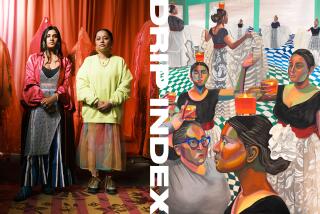Newsletter: Essential Arts & Culture: Convention architecture, art of the border, ‘Cabaret’ turns 50
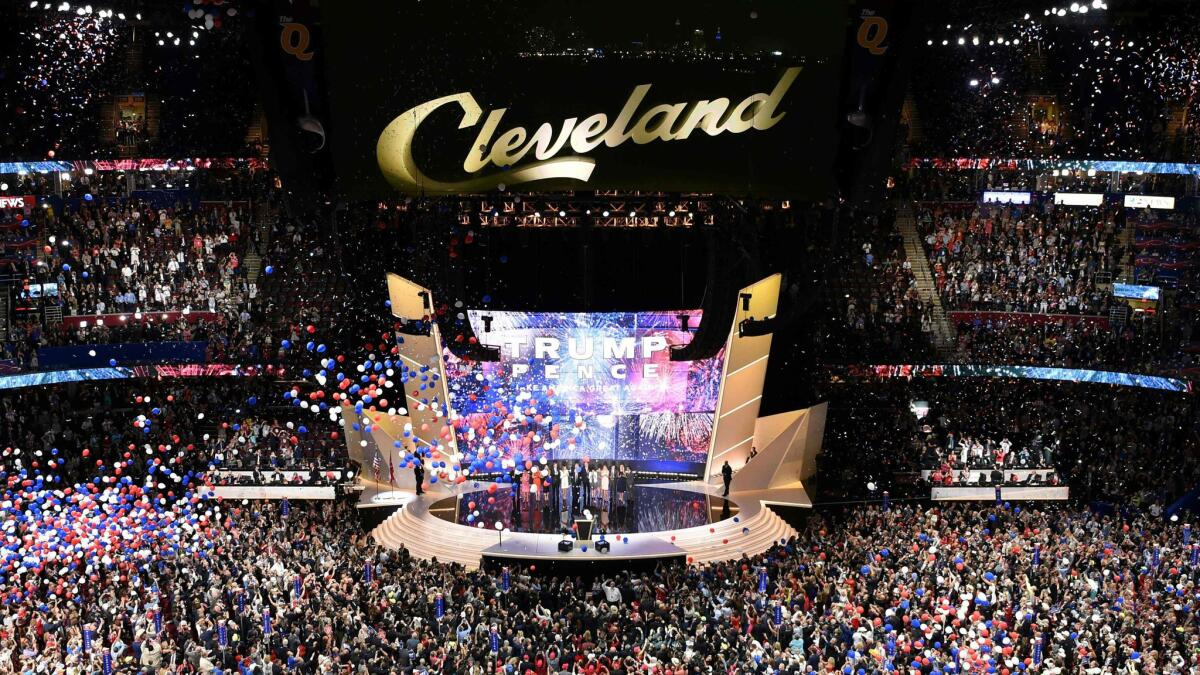
It’s been a hot and steamy week — politically, artistically and climatologically. Which means there has been no shortage of hot culture writing to go with it. I’m Carolina A. Miranda, staff writer for the Los Angeles Times, and this is your guide to the week’s top culture stories:
The architecture of the G.O.P. Convention
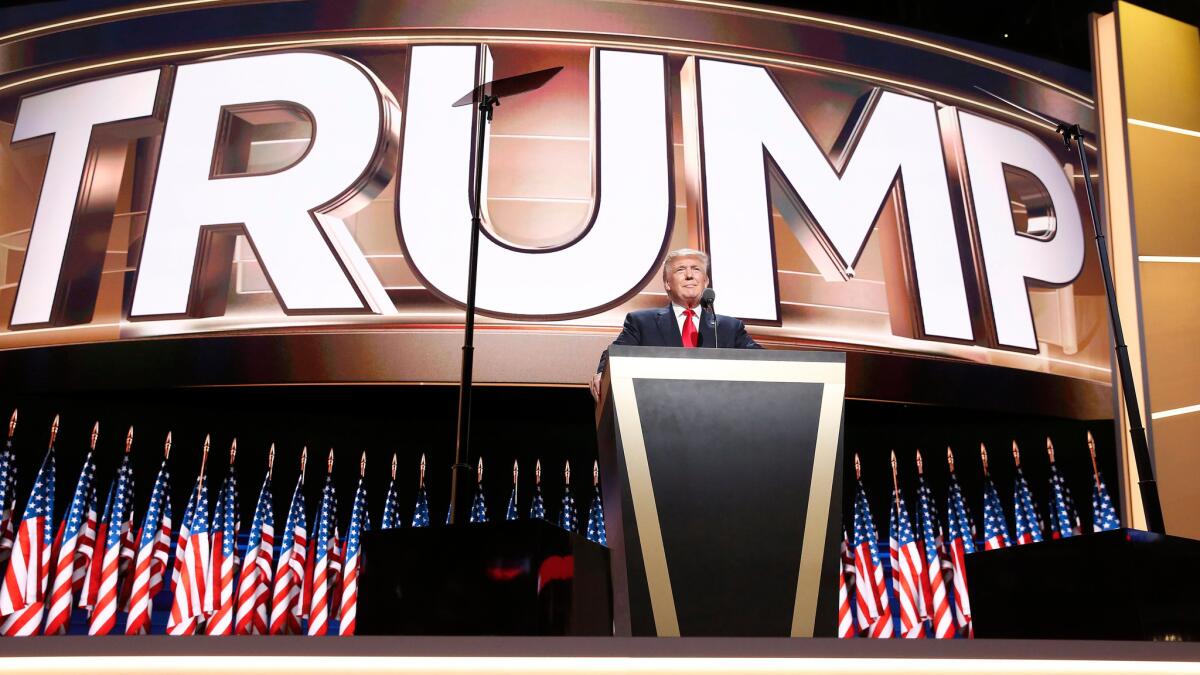
Architecture critic Christopher Hawthorne has been tuning into the doings at the Republican National Convention and spent some time scrutinizing the look of the set. The surprisingly nontraditional design, he writes, is like “a shotgun marriage of Star Trek and Macbook modern,” a look he dubs “Teflon minimalism.” Los Angeles Times
In related news, design writer Kriston Capps looks at the urbanism behind Cleveland’s Public Square, designed by LAND studio and James Corner Field Operations, where protestors, revelers, performance artists and activists gathered as the convention proceeded. Citylab
Marking the U.S.-Mexico border
At a time when the topic of the U.S.-Mexico border has become an object of political contention, two artists — one Mexican, one American — set out to map it … the border from 1821, that is, when Mexico extended into Wyoming, Oklahoma and Kansas. I profile Marcos Ramirez, known as “ERRE,” and David Taylor, who spent a month surveying the old border and marking it with steel obelisks. Photos and video from that guerrilla journey are now on view at the Museum of Contemporary Art San Diego. Los Angeles Times
A rhapsodic ‘Rhapsody in Blue’
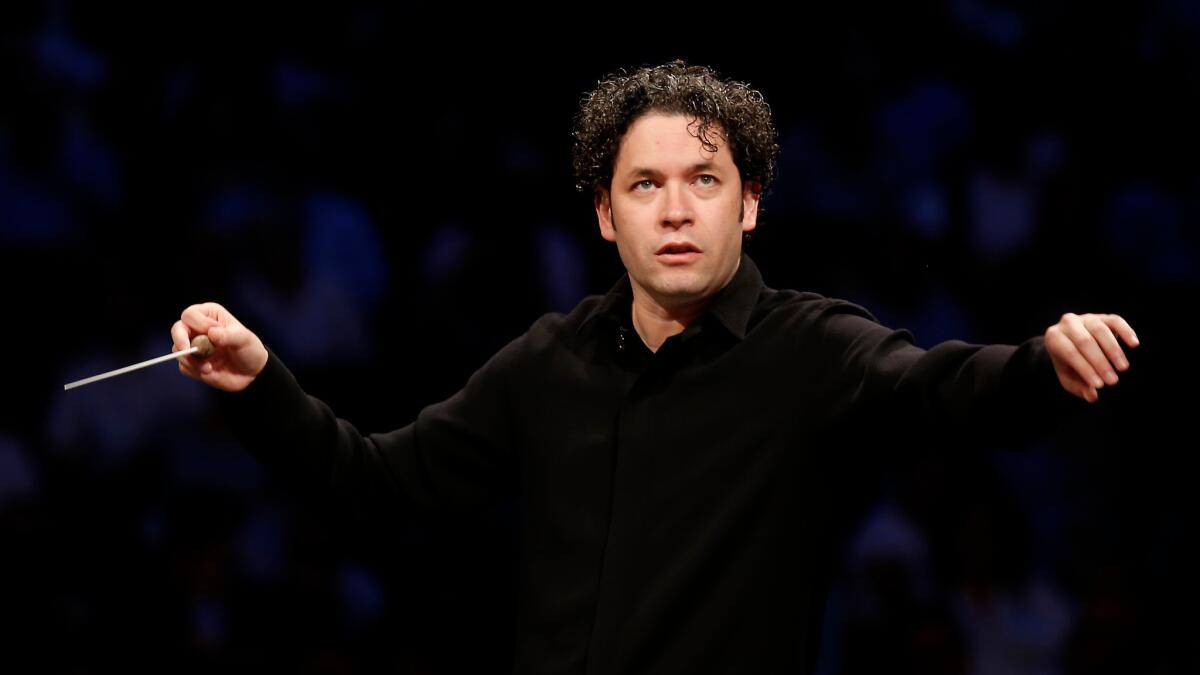
Gustavo Dudamel, pianist Yuja Wang and the Los Angeles Philharmonic took to the stage on Thursday evening at the Hollywood Bowl to play a selection of works by Gershwin and Ravel. Times classical music critic Mark Swed says that the young conductor has been unconvincing staging Gershwin in the past, but this was a “performance for the Bowl history books, which have chapters devoted to all the composer’s greatest interpreters.” Los Angeles Times
Plus: In a separate story, Swed reflects on how two works recently staged in Los Angeles — Leonard Bernstein’s “West Side Story” and Karlheinz Stockhausen’s “Kontakte” — speak to the importance of developing new languages “when dealing with the anguish of the modern world.” Los Angeles Times
Since first debuting in 1966, the famed musical “Cabaret” has reflected changing attitudes — especially about sexuality — and to mark its anniversary it is being staged at the Pantages Theater in Hollywood (after which it will travel to Orange County). Writer Margaret Gray tracks the evolution of a show that has long served “as a mirror of American society,” marking “what has changed and what hasn’t.” Los Angeles Times
In his review of the show, critic Daryl H. Miller finds plenty to like — from the relevance of the material (about a revelrous group that ignores Germany’s slide into Nazism) to the compelling performances. But he says the production, though “meticulously crafted,” could use some more “spontaneity, genuineness and soul.” Los Angeles Times
Rediscovering a California Modernist
Peter Krasnow is not the kind of painter who ever became a household name — partly because he was notoriously resistant to selling his work. Instead, he donated much of it to the Laguna Art Museum in Orange County, where a new exhibition, curated by Michael Duncan, charts the course of his understudied career. Times critic Christopher Knight reviews this “modest yet thoroughly engaging” retrospective. Los Angeles Times
Jane Austen inspires a musical
Jane Austen’s 1811 novel, “Sense and Sensibility,” has been transformed into a musical at the Old Globe Theatre in San Diego. And Times critic Charles McNulty is charmed. “The musical,” he writes, “is impressive less as independent work of musical theater than as an artfully efficient and occasionally highly clever adaptation.” Los Angeles Times
In other news:
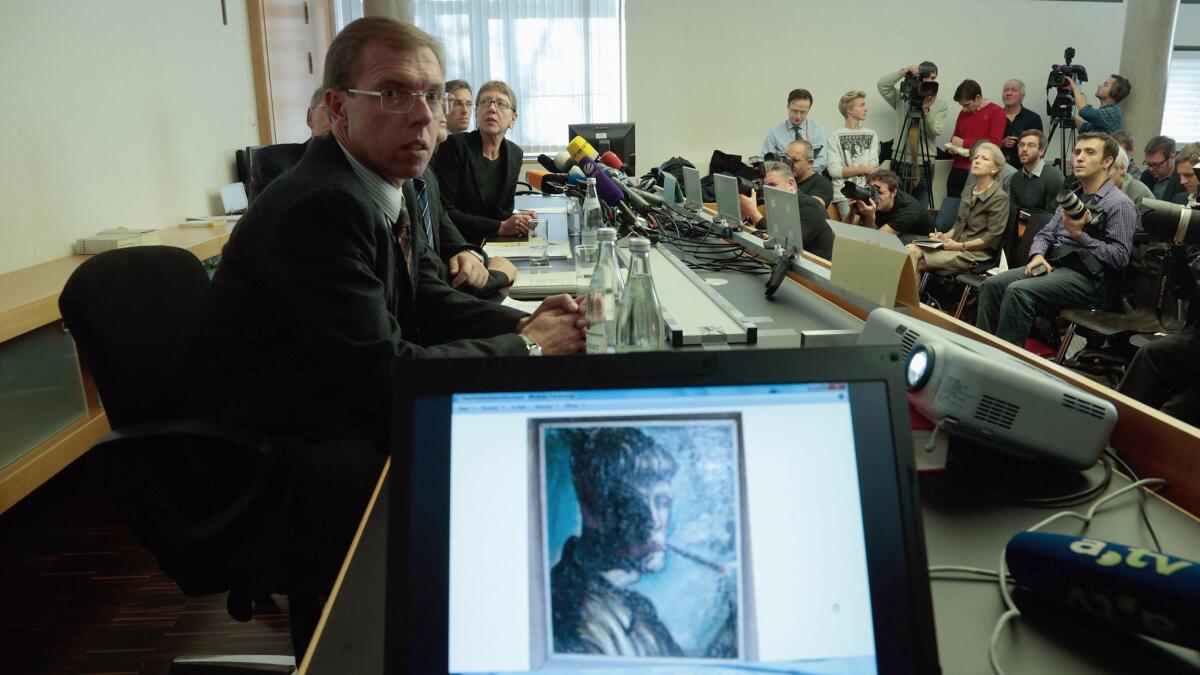
— Ninety-one pieces of art in the collection of Munich art hoarder Cornelius Gurlitt were likely looted by the Nazis. Associated Press
— Donald Trump’s Walk of Fame star got a mini border wall thanks to artist Plastic Jesus. LA Weekly
— The identity of the mysterious woman to whom Van Gogh gave his ear has finally been revealed. The Art Newspaper
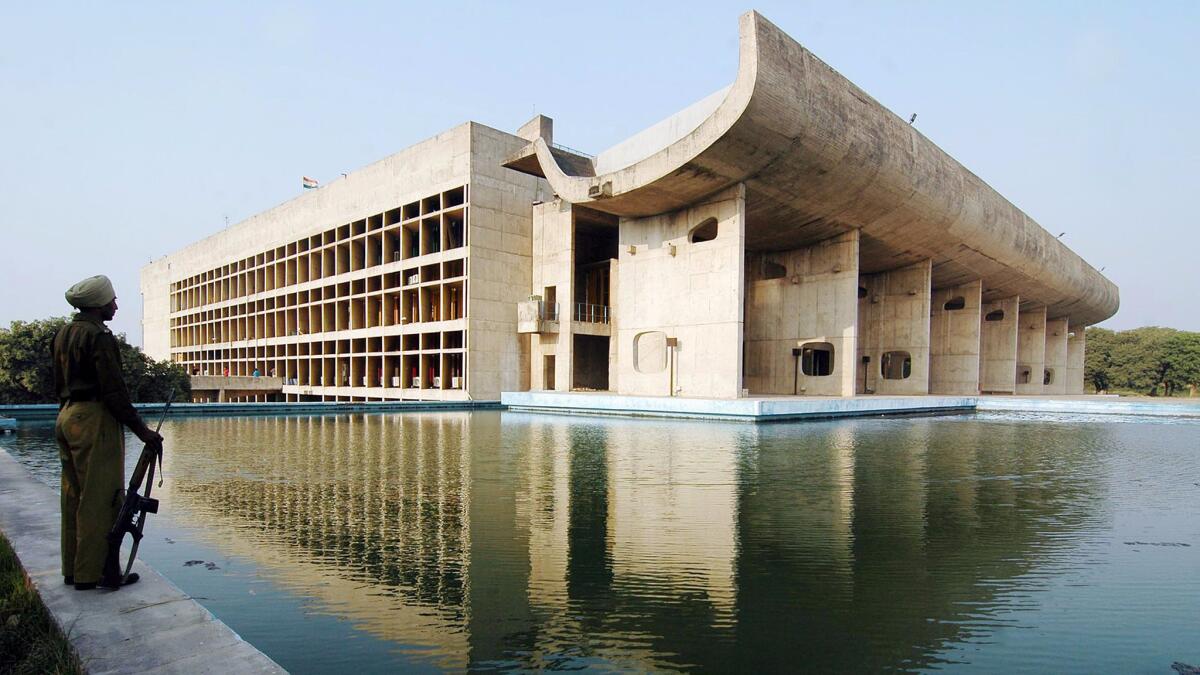
— UNESCO has added 21 new World Heritage Sites to its roster, including 17 buildings by Swiss-French architect Le Corbusier. San Francisco Chronicle, The Art Newspaper
— The Gagosian Gallery in Beverly Hills, operated by Larry Gagosian, must pay New York state $4.3 million in back taxes and penalties. New York Times
— A musical about Sept. 11 is headed to Broadway. New York Times
— The Mark Taper Forum has announced its 2017-18 season, which will include a revival of Luis Valdez’s “Zoot Suit.” Los Angeles Times
— The Music Center’s plaza is set to get a $30-million renovation. Downtown News
— L.A.’s Latino Theater Company has received a $500,000 grant from the Andrew W. Mellon Foundation. Director José Luis Valenzuela talks with writer Gary Goldstein about how he plans to expand. Los Angeles Times
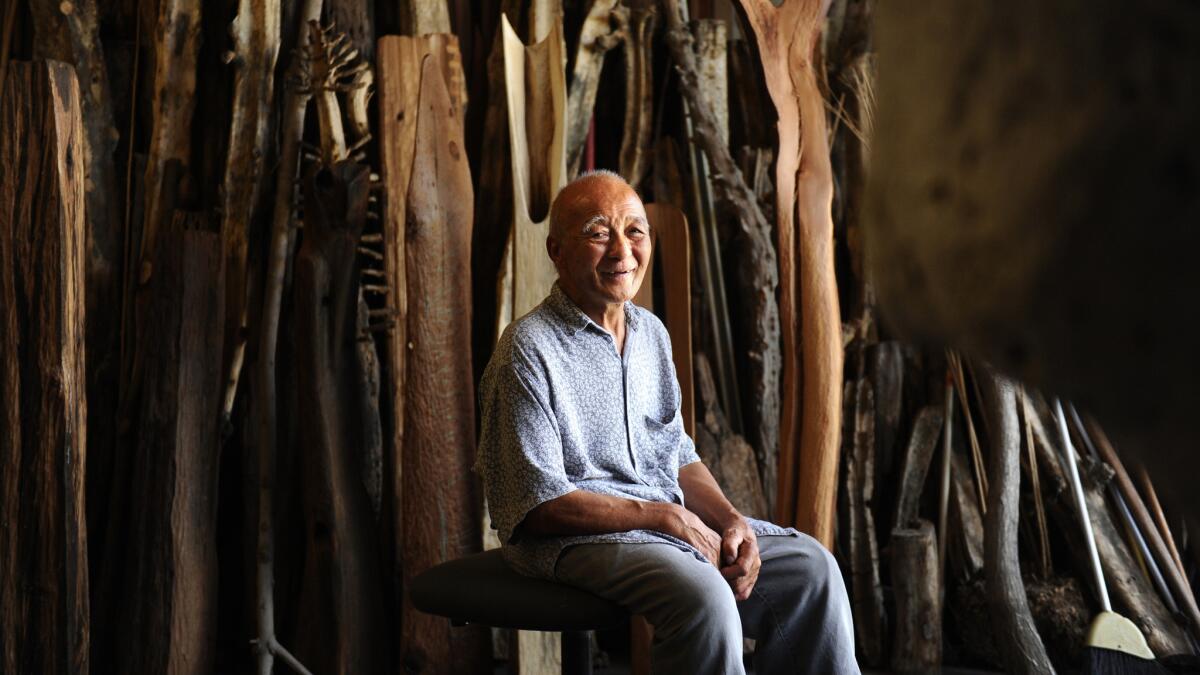
— The Hammer Biennial’s breakout star is sculptor Kenzi Shiokava, a 78-year-old retired gardener who once worked for Marlon Brando. Los Angeles Times
— The California African American Museum in Exposition Park is now an affiliate of the Smithsonian Institution. KPCC
— UCLA is preparing to move forward with new graduate studios designed by L.A. firm Johnston Marklee — thanks to a generous donation from gallerist Margo Leavin. Los Angeles Times
— Artist Richard Prince has organized an exhibition of his favorite covers of High Times magazine at Blum & Poe in Culver City. The exhibition will be marked by the release of a signature marijuana strain. Blum & Poe
— The new public art biennial, “Current: LA Water,” is bringing installations to public areas all over the city. So far, I’ve visited two of them: A garden by Mel Chin and a monument to L.A.’s dead by Teresa Margolles. Stay tuned: I’ll be popping into others in the coming weeks! currentla.org
Must-see exhibition
Parrasch Heijnen in Boyle Heights has a survey devoted to the work of California Light and Space sculptor Peter Alexander that brings together a hallucinatory assortment of his works from the ’60s and the contemporary era. “Its 21 pieces meld simple shapes and complex colors to give beauty a real kick,” writes critic David Pagel. The show is on view through Sept. 2. Los Angeles Times
And last but not least…
Your moment of aerobics in the museum. Do NOT try this at Getty Villa.
Find me on Twitter @cmonstah.
More to Read
The biggest entertainment stories
Get our big stories about Hollywood, film, television, music, arts, culture and more right in your inbox as soon as they publish.
You may occasionally receive promotional content from the Los Angeles Times.


